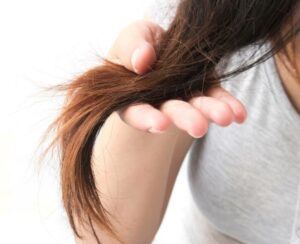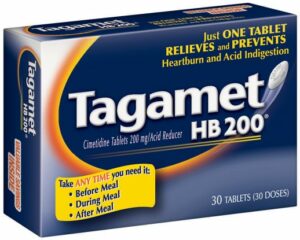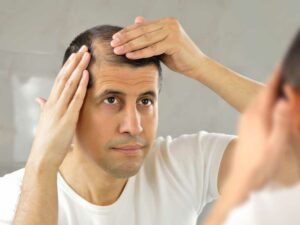Professor Andre Mester (1964)
In 1964, Professor Andre Mester began experimenting with the use of low-power laser energy in Budapest, Hungary. He observed that low energy laser exposure has a stimulating effect on the biological system, while high-energy laser exposure had an inhibiting effect. In his experiments with wound treatment on mice, he noticed rapid healing due to microcirculation of blood supply. This healing was also obvious in laser light treatment of diabetic patients suffering with dystrophic sores. He was amazed to find sores that would not otherwise heal were healed, and he also observed accelerated hair growth and thickening of hair in the treated areas. This theory through its evolution has since been refined and is widely becoming one of the most popular non-invasive hairloss treatments. Laser researcher Dr. J. Layton Wright states: … “Laser Hair Therapy increases microcirculation of the hair follicle, which allows nutrients and freshly oxygenated blood to access the hair follicle with the results being a stimulation of the natural hair growth cycle.”
Dr. Trelles (1984)
In 1984, Dr. Trelles showed in one study that patients with alopecia areata who were treated with He-Ne laser 632,8 nm showed a good response. Dr. Trelles reported that most of the patients with alopecia areata responded well after only 6 to 8 treatments administered twice a week for a couple of weeks. The He-Ne laser was placed 30 centimeters from the alopecia areata with dosages ranging from 3-4 Joule per sq. cm. No fibres or lenses were used. In the same study, microscopic evaluation of the hair shaft structure on the alopecia areata irradiated areas showed a clear medulla rich in keratin after treatment. Daily treatments appeared to prevent regrowth, causing irritation with probable increase in hairloss.
Japan Laser Therapy Association (1992)
At the 4th annual Meeting of the Japan Laser Therapy Association in 1992, success was reported with an increase in both hair growth and the density of the hair follicles in the laser treated areas of both male and female stress alopecia and alopecia areata with only one failure out of 40 cases reported in two papers.
Laser Conference, Helsinki Finland (1993)
An unpublished study presented at Laser Conference, Helsinki, Finland 1993 shows the effect of LLLT on Androgenetic Alopecia. A double-blind comparative study with placebo laser for treatment of Hereditary Androgenetic Alopecia in young males was presented in Helsinki 1993 describing the positive effect of LLLT treatments on hair growth, stop of hairloss and hair shaft tensile strength. At the Helsinki Laser Conference research results demonstrating the effect of LLLT compared to a placebo group was presented. It was found that hair re-growth was clearly shown in the laser group. In addition all patients, with the exception of one, in the laser-treated group showed a complete stop of hairloss. All patients, except 3, showed a clear hair re-growth of hair with a reduction of at least one category in the Hamilton classification. Post-treatment showed the dermis with almost the same amount of hair follicles as pretreatment, although a number of new follicles could be seen with clearly noticeable hair growth. 50% of the follicles are now in the anagen phase (growth). When comparing the histological findings, transformation into anagen hair follicles could be observed in 83% of the patients on laser treatment but in none of the placebo patients. Out of 18 patients, 14 showed an increase in hair thickness, and all 18 showed improvement in general hair shaft quality measured with the hair stretcher. The results showed no improvement in the placebo group or any adverse effects of the treatment.
Prof. Pekka J. Pöntinen (1996)
Professor Pöntinen is one of the pioneers of LLLT in Scandinavia thorough theoretical and practical studies on how to apply low level laser therapy in the treatment of chronic, especially musculoskeletal and myofascial pain and dysfunction, vascular disturbances, wound and ulcer treatment etc. Prof. Pekka J. Pöntinen established the beneficial effect of Laser Hair Care® on scalp blood flow and published his results in 1996. The effects of hair lasers on skin blood flow were measured on three different devices to establish the effect of scalp blood flow. The hair lasers used were Laser Hair Care (670 nm ), a He-Ne (632.8 nm ) laser containing one laser transferring light via fibres and lenses to the patient and a laser identical to the Laser Hair Care where the lasers were replaced (placebo). The differences in the laser systems are illustrated by the fact that Laser Hair Care increased scalp blood flow by 54%. The He-Ne hair laser had no effect while the Placebo decreased flow rate by 36%. In addition, the skin temperatures measured before and after the treatment showed little change.
European Studies (1997)
In 1997 a European group of scientist’s published their work on LLLT in the treatment of alopecia of the scalp. The authors tried to verify the efficacy of low energy laser (LLLT) in scalp alopecia. Sixty patients were divided in two groups: A) laser group, 33 patients treated with both LLLT and classical therapy; B) control group, 27 patients treated only with classical therapy, Before, during and after treatment, historical samples were done. For the group A the results were rather superior but in a twice shorter time shorter time than group B. The maintenance of the good results needed classical therapy for a long period. They conclude that LLLT therapy could have a useful complementary method for the treatment of scalp alopecia. The same European group of scientist’s published their findings on LLLT use in the treatment of alopecia and crural ulcers in 1998. The authors tried to verify the efficacy of LLLT in scalp alopecia and crural ulcers of different causes. Laser used was (red diode, continuous emission, 8 mW power, wave length 670 nm spot size about 5 mm diameter on some points. They also use as control classical therapy. Before, during and after treatment, histological samples were taken from alopecia regions. For the laser groups (alopecia and ulcers) the results were rather superior and in a three or twice time shorter than the control group. They conclude that LLLT therapy is a very useful complementary method for the treatment of scalp alopecia and crural ulcers.





